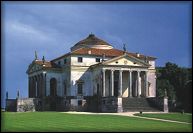|
ARTICLES ON VASTU Vasati - The Most Ancient Way of Living in Harmony with Nature (by Marcus Schmieke)
The masters of the old knew how to build according to the universally valid laws of nature and how to erect their buildings in unison with these laws. These same laws are fundamental to the Chinese Feng Shui, to European geomancy and to the architectural style of the old Mesoamerican people called the Maya, to name a few. The Vasati scriptures date from a time about 5,000 years ago and carry the earliest known descriptions of these universal laws of nature. Scarcely any other architectural tradition lasted 5,000 years while staying unaltered and still being applied today. Buildings withstanding natural disasters, destructions and dilapidation are for the most part those which have been built exactly after the Vasati principles. Just have a glance on India. Obviously, the renown Roman architect Vitruvius knew the Indian Vasati scriptures, for even the chapters in his legendary opus De re architectura are in the same sequence as they are in the Manasara, a classic Vasati scripture. Vitruvius lived 2,000 years ago. His works inspired Andrea Palladio who incorporated the Vasati principles in his world-famous 16th century Renaissance edifices. The knowledge behind his work, the origin of this art, is revealed only today. What sources did those precursors of occidental architecture take their knowledge from? You will see it here. The mystery of why we feel so well in Palladio´s villas is finally unveiled.
|
| © 2001 All rights reserved. Florida Vedic College Web Site by U.S.Digitech™ |
 If
you enter edifices of the old like Andrea Palladio´s famous
Florentine villas, you feel a profound well-being unknown with
modern rooms in our contemporary Western buildings. This same
feeling of energy and harmony is present with almost any masterpiece
of the old architectural traditions, be they in Europe, in India,
South America or still another part of the world. Modern Western
buildings usually cannot convey this special feeling anymore.
If
you enter edifices of the old like Andrea Palladio´s famous
Florentine villas, you feel a profound well-being unknown with
modern rooms in our contemporary Western buildings. This same
feeling of energy and harmony is present with almost any masterpiece
of the old architectural traditions, be they in Europe, in India,
South America or still another part of the world. Modern Western
buildings usually cannot convey this special feeling anymore.